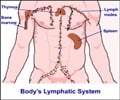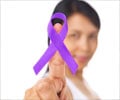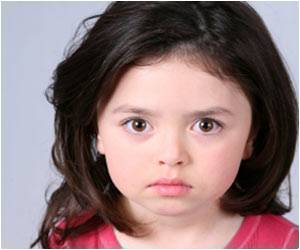Lifestyle changes can lower risk of metabolic syndrome in childhood cancer survivors, reveals a study published in the journal Cancer.

In their early study, the researchers found that 56 percent of childhood cancer survivors had heart abnormalities and 48 percent of survivors suffered from neurocognitive impairment including memory problems.
The study found that childhood cancer survivors who were cancer-free for at least 10 years and lead an unhealthy lifestyle are two times more likely to have the metabolic syndrome than those who followed the healthy lifestyle guidelines.
Having said that, studies exploring lifestyle habits among survivors of childhood cancer reported that only -
· 21 percent of childhood cancer survivors met the guidelines for fruit and vegetable consumption.
· 84 percent obtained more than 30 percent of their calories from fat.
Why? Researchers found that the barriers to adopting healthier lifestyle habits was either being too tired or too busy; not belonging to a gym; visual appeal of fatty foods; or even consumption of fatty foods in social situations. But a major barrier is the lack of knowledge about choosing healthier options.
Findings of the present study indicate that children with cancer and adults who had cancer when they were children ‘should receive information about how their lifestyle may influence their long-term health’.
‘Cancer survivors should not smoke. In addition, adopting a lifestyle that includes maintaining a healthy body weight, regular physical activity, and a diet that includes fruits and vegetables and that limits refined sugars, excessive alcohol, red meat, and salt has potential to prevent development of the metabolic syndrome,’ suggested lead author of the study Dr. Kirsten Ness.
Childhood Cancer in India
In India, approximately 50,000 children develop cancer each year and many of them go undiagnosed or do not get adequate treatment, according to Rajiv Gandhi Cancer Institute and Research Centre. Only about 15 to 20 percent of children with cancer get proper cancer treatment. Unfortunately, about 40 to 50 percent of them drop out of treatment. Fortunately, cure rate is high.
Leukemia and lymphoma (Hodgkin’s) are the common childhood cancers found in India. However, non-Hodgkin’s lymphoma caused by mutation due to external factors like pollution also affects a very high percentage of children with cancer.
Here are some facts and figures on childhood cancer in India –
· In India, cancer is the 9th common cause for the deaths among children between 5 to 14 years of age.
· The proportion of childhood cancers relative to all cancers in –
· Boys: 0.8 to 5.8 percent
· Girls: 0.5 to 3.4 percent
· The highest incidence of cancers is observed for boys than girls. But this is not a definitive fact since many girls with cancer are not registered with National Cancer Registry Program.
· The highest incidence of childhood cancer is seen in southern region of India and the lowest in North-east.
· Leukemia and lymphoma are the commonest malignancies in boys whereas leukemia and brain tumors are commonest in girls.
Childhood Cancer and Childhood Cancer Survivor Facts
· In developing and underdeveloped countries, 200,000 children diagnosed with cancer each year have limited access to curative treatment, and only about 25 percent survive.
· AIDS, asthma, diabetes, and congenital disorders put together take fewer lives than cancer alone.
· Some brain cancers are terminal upon diagnosis and no new protocols have been developed in 30 years.
· Cancers such as neuroblastoma and disseminated medulloblastoma are terminal if they progress or recur.
· Cancer treatments can affect a child’s growth, fertility, and endocrine system. Physical and neurocognitive disabilities are probable side effects of cancer therapy.
· Radiation therapy on the brain of the child can significantly damage the child’s cognitive functions.
· Childhood cancer survivors are at high risk for secondary cancers later in life.
· 74 percent of childhood cancer survivors suffer from chronic illness, 40 percent of them severe or fatal.
· Childhood cancer survivors can be permanently immunologically suppressed.
· Childhood cancer survivors may suffer from depression and feelings of isolation.
References:
1. http://www.cancer.gov/cancertopics/pdq/supportivecare/nutrition/HealthProfessional/page5#Reference5.15
2. http://www.stjude.org/hudson-survivors
3. http://www.rgcirc.org/php/showContent.php?linkid=52&partid=3
4. http://medind.nic.in/ibv/t14/i3/ibvt14i3p218.pdf
5. http://www.kidsvcancer.org/facts/
Source-Medindia















